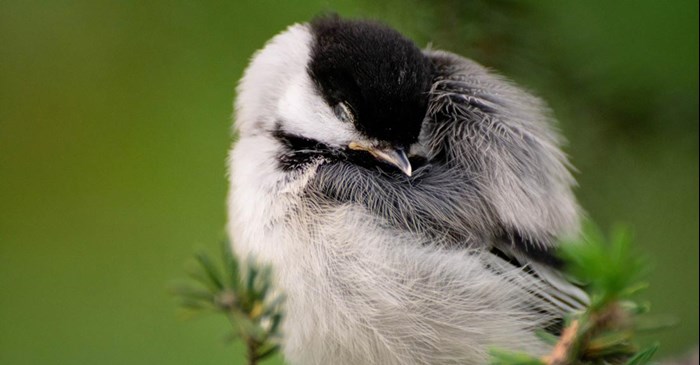Ever wonder how birds can keep on clasping a perch, even after they’re fast asleep? After all, you can’t keep a grip on an object while you sleep. So how do birds sleep and grasp at the same time?
The big thing to understand here is unlike humans, birds don’t have to think about grabbing on. Closed and grasping is the default position of their feet; it's automatic.
Here’s how those feet work to keep sleeping birds secure on their perches:
- The bird settles on his perch by “sitting” on his feet.
- Once they reach this seated position, the tendons in their legs tighten.
- This tightening of the tendons pulls the toes inward, which makes a nice, tight grip on the perch.
- When the bird is ready to move — take off or hop to the next perch — he “stands,” raising his body off his feet.
- This change in posture relaxes the tendons and releases the toes, allowing him to fly or hop to the next perch.
How foot structure determines taxonomic rank
Here's another fun fact about bird feet. Songbirds have four toes — three that face forward and one that’s in the back. This is known as an anisodactyl arrangement, and this foot structure is characteristic of songbirds that belong to the order passerine. Also known as "perching birds," many of your favorite backyard birds, such as robins, cardinals, jays, and chickadees, belong to this group.
Super grip in windy conditions
Admittedly, it is difficult for people to catch songbirds taking a nap. But you can see the super-grip in action on the next breezy day. It may seem like they're clinging precariously to a swaying branch or feeder perch. But now that you know how bird feet operate, you'll know this feature is doing a good job of keeping them locked in place. After all, if you’re a creature that weighs as much as a quarter, an aptitude to clasp on tight comes in handy!
To get a bit more in touch with the nature around you and the songbirds within it, keep your feeders full of high-quality birdseed. Lyric Supreme Mix is a highly nutritional blend, packed with lots of black oil sunflower, nuts, many different seeds, and more, to draw in the widest variety of colorful birds. Get a bag today!
